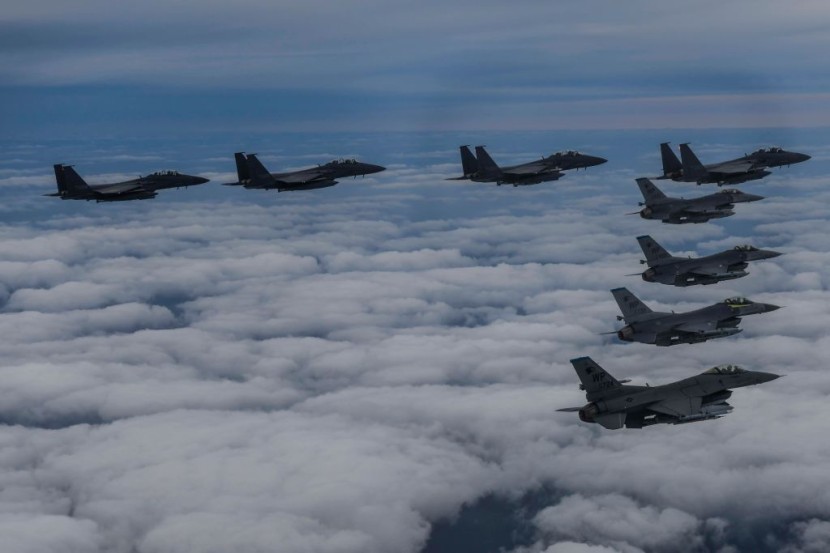
The North American Aerospace Defense Command reported that the US Air Force sent two F-16 fighter jets to intercept two Russian bombers that were flying close to Alaska on Monday.
According to NORAD, the two Russian Tu-95 Bear-H bombers were spotted, tracked, positively identified, and intercepted while entering and operating within the Alaskan Air Defense Identification Zone, even though they did not reach American or Canadian airspace.
US Intercepts Russian Bombers Near Alaskan Coast
According to the Federal Aviation Administration, Air Defense Identification Zones are sections of airspace where all aircraft must be recognized, located, and have their flight plans restricted in the interest of national security.
NORAD, the United States, and Canada's joint air defense agency stated that the Russian operation was neither threatening nor provocative. The emergence of Russian bombers and their interception by US fighter fighters comes at a difficult time in the two countries relationship.
The situation has deteriorated since Russia invaded Ukraine, which the US has supported with humanitarian and military aid while imposing economic penalties on Moscow, according to NBC News. According to the statement, NORAD follows and positively recognizes foreign military aircraft entering the ADIZ, regularly tracks their activities, and escorts them out of the zone when required.
Around this time of year, Russia routinely conducts nuclear exercises, though it was unclear if the presence of the bombers was connected to the drills. Russian planes are frequently intercepted in the region, which is near Russia's far eastern border. Two Russian maritime patrol aircraft were discovered in the ADIZ last month, according to NORAD. To track and identify aircraft, NORAD claims to employ a multilayer defense network comprising satellites, ground- and aerial radars, and fighter jets.
According to its website, the Alaskan NORAD Region can keep track of what happens in and around North American airspace 24 hours a day, seven days a week. CBS News reported.
Russia vs. US in Alaska
According to the National Archives, the US acquired Alaska from Russia on March 30, 1867, for $7.2 million. According to Alaska's official website, the distance between Russia's Big Diomede Island and Alaska's Little Diomede Island is less than three miles at their closest point in the Bering Strait, while the distance between mainland Alaska and Russia is 55 miles at their closest point between Alaska's Seward Peninsula and Russia's Chukotka Peninsula.
The Russian Bear bombers, which were created in response to a request from Soviet planners for a bomber plane that could carry 12 tons of bombs and travel 5,000 miles, would have little trouble covering such a distance. According to the journal, the resulting Tu-95 can fly more than 9,000 miles on internal fuel while reaching more than 500 mph speeds.
Since 2007, when Russia resumed out-of-area Long Range Aviation activities, there have been six to seven intercepts with Russian military aircraft on average each year, while the number of intercepts has fluctuated from zero to fifteen, as per Newsweek via MSN.
Related Article: Ukraine Drone Attack: Joe Biden Slams Vladimir Putin's 'Brutality,' Vows To Hold Russia Accountable for 'War Crimes'
@YouTube
© 2025 HNGN, All rights reserved. Do not reproduce without permission.








